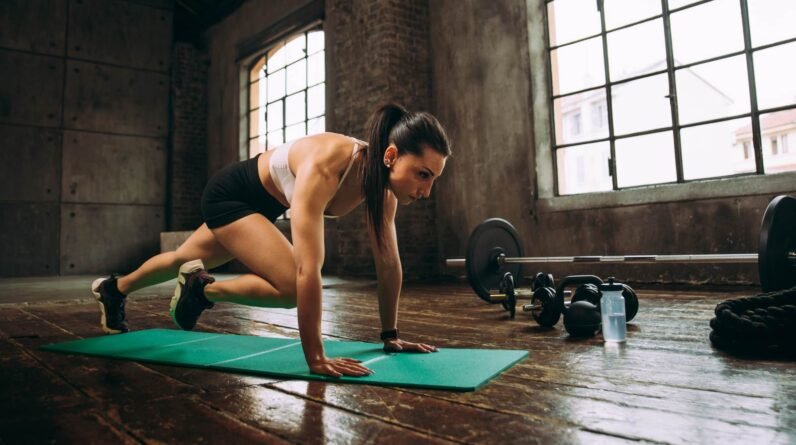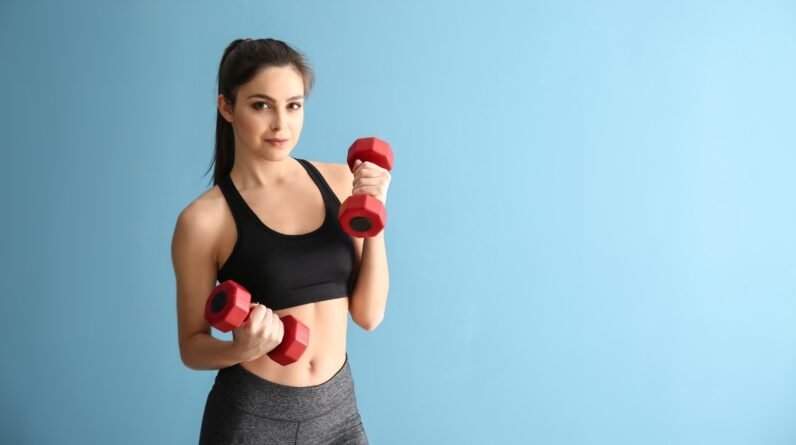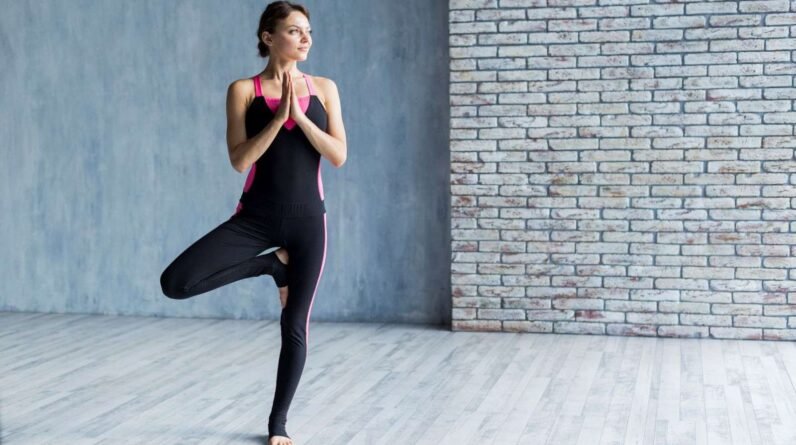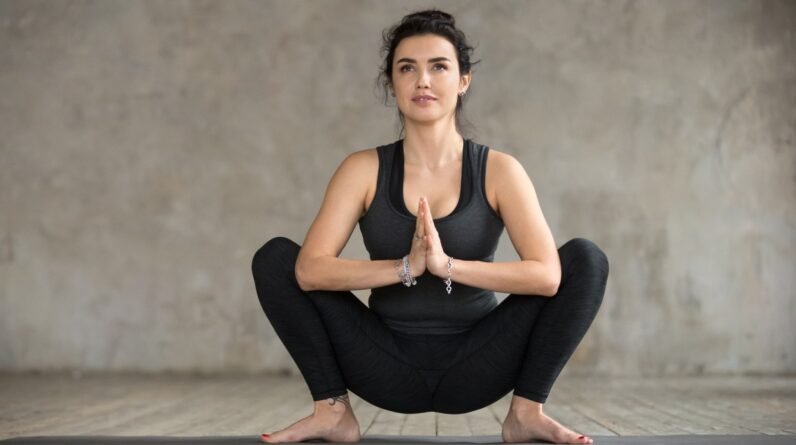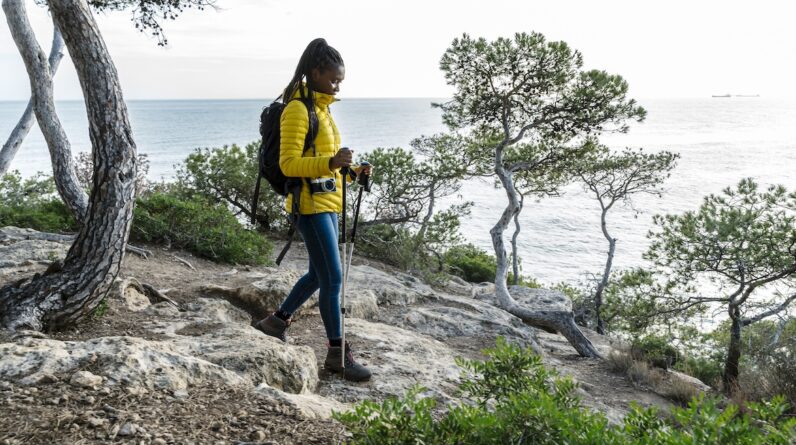
Hiking on your period is a problem that Heather Anderson, an author, backpacking expert, and National Geographic Adventurer of the Year, has heard fellow hikers grumble about time and again.
“Some people are just very intimidated by the idea of dealing with [their period] on the trail,” says Anderson, who’s the only woman to complete the Appalachian, Pacific Crest, and Continental Divide National Scenic Trails each three times.
But you don’t need to postpone your trek just because it’s that time of the month. With a bit of forethought and expert packing, you can comfortably hike on your period.
Even when Anderson’s period came early while on a trip years ago—and her partner at the time was ready to drive them back home—she continued on her journey without a hitch. Here’s how you can do it, too.
How to use menstrual products on the trail
The best menstrual products to bring on the trail are the ones that are most comfortable and effective at home, Anderson says. That said, you’ll need to modify how you use, clean, and dispose of them slightly while in the backcountry.
Menstrual cups
Menstrual cups are by far the most popular option among hikers, Anderson says. You’ll need to carry just one cup, saving you space in your pack. And they’re generally safe to wear for up to 12 hours, according to the Mayo Clinic.
However, you may need to empty them more frequently depending on your flow, adds Kelly O. Elmore, MD, a board-certified OB/GYN in San Diego. Before you insert the cup, make sure to wash your hands, according to the Centers for Disease Control and Prevention (CDC).
When emptying the cup, you’ll need to follow the same Leave No Trace principles as when you’re going number two in the backcountry: Dig a hole in the ground, bury the contents, and cover it back up, Anderson says. Then, you’ll clean your menstrual cup with a biodegradable soap that’s free of dyes and fragrances (Dr. Bronner’s is a great option) and filtered water before reinsertion, she notes. During disposal and cleaning, make sure you’re at least 200 feet away from any water sources (streams, lakes, rivers, etc.), camp, and trails, she adds.
If you start or finish your cycle while on a multi-day hike, you’ll also want to sanitize your cup by boiling it for about five1 to seven2 minutes in clean, filtered water. When in doubt, follow your cup’s cleaning instructions.
Tampons and pads
Tampons are another effective option while hiking, but they need to be changed more frequently than cups, every four to eight hours, according to the CDC. As with menstrual cups, you’ll need to wash your hands before insertion.
Similarly, pads should be replaced at least every few hours, regardless of flow; the moisture on the used product can be a “breeding ground” for bacteria and fungi, increasing the risk of rash or infection, per the CDC. That means you’ll need to stash plenty of extras in your pack.
The biggest downside of using disposable products: You’ll need to “pack them out,” or carry the used tampons and pads in your backpack until you have access to a trash can, Anderson says. To make the task less grody, Anderson recommends placing used products in MaskIT’s disposable bags, which seal shut and block odor.
“I use those when I’m hiking because then there is no mess, there is no odor, you can just keep it in your trash bag, and it’s not gross at all,” she explains. “That made a huge difference for me.”
Specifically designed bags aside, you can also store used menstrual products in a Ziploc bag covered with duct tape for discretion, Anderson suggests. You can keep it as a dedicated trash bag for your entire trip and empty it when you reach each town, or toss the whole thing away when you finally head home, she explains.
Period underwear
Period underwear can be useful for a quick overnight trip or two-day journey, Anderson says. They double as standard underwear when you finish menstruating, are reusable, and can be worn for a max 12 to 14 hours, depending on your flow and the brand. The CDC does recommend cleaning them more frequently to prevent rash or infection, though.
However, you’ll need to wash—and, more importantly, dry—the underwear with your biodegradable soap after each use, Dr. Elmore says. If you’re short on time, you’ll either be carrying wet undies or blood-soaked ones in your pack. The key takeaway: Bring a few extra pairs.
“There’s nothing wrong with taking care of yourself in the backcountry just like you would at home. It’s not like you have to be super Spartan about it…There are ways to deal with it and keep yourself comfortable and clean even though you’re out in the woods.” —Heather Anderson
How to store your menstrual products while hiking
To keep your menstrual products safe and dry while out on the trail, Anderson suggests stashing them in a separate Ziploc bag, then storing that inside a toiletries or first aid bag that’s water-resistant. This double-bag situation generally offers enough protection from the elements, but if you’re expecting to encounter plenty of rain, consider placing that Ziploc bag inside of its own waterproof bag, she notes.
Finally, stow the entire sack in the lid pocket of your backpack so they’re readily accessible and unlikely to be crushed by your heavy hiking gear, Anderson recommends.
How to make hiking on your period comfortable
Preparation is key to ensure your mid-period hike is actually enjoyable, Dr. Elmore says. As always, bring an emergency kit. And if you typically take a pain-relief medication while menstruating, she suggests starting your first dose the night before your expected start date and packing extra in your supply; you may need one dose to soothe your cramps and another to ease your back aches while out on the trail.
Similarly, remember to bring more pads, tampons, or pairs of period underwear than you’d expect to need just in case your flow is heavier than usual, Dr. Elmore recommends. If you’re visiting a park with bathrooms and other facilities, plan your route before you head out the door so you have dedicated pit stops to replace, clean, or dispose of your menstrual products, take a rest break, and use any pain-relief supplies, she adds.
During your trek, wear lightweight, moisture-wicking clothing that keeps you dry, cool, and comfortable and stay on top of your hydration levels, Dr. Elmore says. One small 2021 study in BMC Women’s Health found that menstruating individuals who were encouraged to drink water regularly had a considerable decrease in painkiller use.
Also important: Listen to your body. If you’re dealing with lightheadedness, dizziness, headaches, fatigue, or general discomfort, slow down or take a breather, Dr. Elmore advises.
“There’s nothing wrong with taking care of yourself in the backcountry just like you would at home,” Anderson adds. “It’s not like you have to be super Spartan about it…There are ways to deal with it and keep yourself comfortable and clean even though you’re out in the woods.”
Well+Good articles reference scientific, reliable, recent, robust studies to back up the information we share. You can trust us along your wellness journey.
- Wunsch N, Green SJ, Adam S, Hampton J, Phillips-Howard PA, Mehta SD. In Vitro Study to Assess Effective Cleaning Techniques for Removing Staphylococcus aureus from Menstrual Cups. Int J Environ Res Public Health. 2022 Jan 27;19(3):1450. doi: 10.3390/ijerph19031450. PMID: 35162481; PMCID: PMC8835062.
- Sica VP, Friberg MA, Teufel AG, Streicher-Scott JL, Hu P, Sauer UG, Krivos KL, Price JM, Baker TR, Abbinante-Nissen JM, Woeller KE. Safety assessment scheme for menstrual cups and application for the evaluation of a menstrual cup comprised of medical grade silicone. EBioMedicine. 2022 Dec;86:104339. doi: 10.1016/j.ebiom.2022.104339. Epub 2022 Nov 10. PMID: 36370636; PMCID: PMC9664401.
- Torkan B, Mousavi M, Dehghani S, Hajipour L, Sadeghi N, Ziaei Rad M, Montazeri A. The role of water intake in the severity of pain and menstrual distress among females suffering from primary dysmenorrhea: a semi-experimental study. BMC Womens Health. 2021 Jan 28;21(1):40. doi: 10.1186/s12905-021-01184-w. PMID: 33509179; PMCID: PMC7845092.


